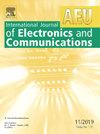研究各种参数对无线电力传输效率的影响
IF 3
3区 计算机科学
Q2 ENGINEERING, ELECTRICAL & ELECTRONIC
Aeu-International Journal of Electronics and Communications
Pub Date : 2025-02-21
DOI:10.1016/j.aeue.2025.155723
引用次数: 0
摘要
电动汽车在汽车市场占据主导地位,尤其是近年来。然而,困扰司机的充电问题仍在继续。虽然导电充电是一项成熟的技术,但它仍然需要充分满足用户的期望。另一方面,无线充电技术以其动态充电的特点吸引了用户的注意。虽然这项技术每天都在进步,但效率还没有达到理想的水平。本文设计了一种面向电动汽车的无线充电系统,并对影响充电效率的因素进行了研究。该系统由逆变器、补偿系统和负载组成。根据电缆类型、气隙、冷却和脉宽调制参数,通过40个实验观察了系统的效率,每个实验持续20分钟。除了效率外,还研究了频率行为。实验结果与MATLAB和ANSYS软件中设计的模型进行了比较。当气隙为19 ~ 20 mm、55 ~ 56 mm、91 ~ 92 mm、127 ~ 128 mm和145 ~ 146 mm时,实验结果与仿真结果的平均误差分别为1.75、2.03、1.85、1.58和2.00%。在300 W的测试中,在145 mm气隙下,无线传输功率的最低效率为59.25%,在56 mm气隙下,最高效率为85.74%。本文章由计算机程序翻译,如有差异,请以英文原文为准。
Investigation of the effects of various parameters on wireless power transfer efficiency
Electric vehicles have dominated the automotive market, especially in recent years. However, the charging problem that stresses drivers continues. Although conductive charging is an established technology, it still needs to meet user expectations fully. On the other hand, wireless charging technology attracts users’ attention with dynamic charging features. Although this technology improves daily, efficiency is not at the desired level. In this study, a wireless power transfer system was designed for electric vehicles, and the factors affecting the charging efficiency were investigated. This system consists of an inverter, a compensation system, and a load. The efficiency of the system according to cable type, air gap, cooling, and pulse-width modulation parameters was observed through 40 experiments, each lasting 20 min. In addition to efficiency, the frequency behavior was also investigated. Experimental results were compared with models designed in MATLAB and ANSYS software. The average errors between the experimental and simulation results are 1.75, 2.03, 1.85, 1.58, and 2.00% for air gaps of 19–20, 55–56, 91–92, 127–128, and 145–146 mm, respectively. Power was transferred wirelessly with a minimum efficiency of 59.25% at a 145 mm air gap and a maximum efficiency of 85.74% at a 56 mm air gap in 300 W tests.
求助全文
通过发布文献求助,成功后即可免费获取论文全文。
去求助
来源期刊
CiteScore
6.90
自引率
18.80%
发文量
292
审稿时长
4.9 months
期刊介绍:
AEÜ is an international scientific journal which publishes both original works and invited tutorials. The journal''s scope covers all aspects of theory and design of circuits, systems and devices for electronics, signal processing, and communication, including:
signal and system theory, digital signal processing
network theory and circuit design
information theory, communication theory and techniques, modulation, source and channel coding
switching theory and techniques, communication protocols
optical communications
microwave theory and techniques, radar, sonar
antennas, wave propagation
AEÜ publishes full papers and letters with very short turn around time but a high standard review process. Review cycles are typically finished within twelve weeks by application of modern electronic communication facilities.

 求助内容:
求助内容: 应助结果提醒方式:
应助结果提醒方式:


